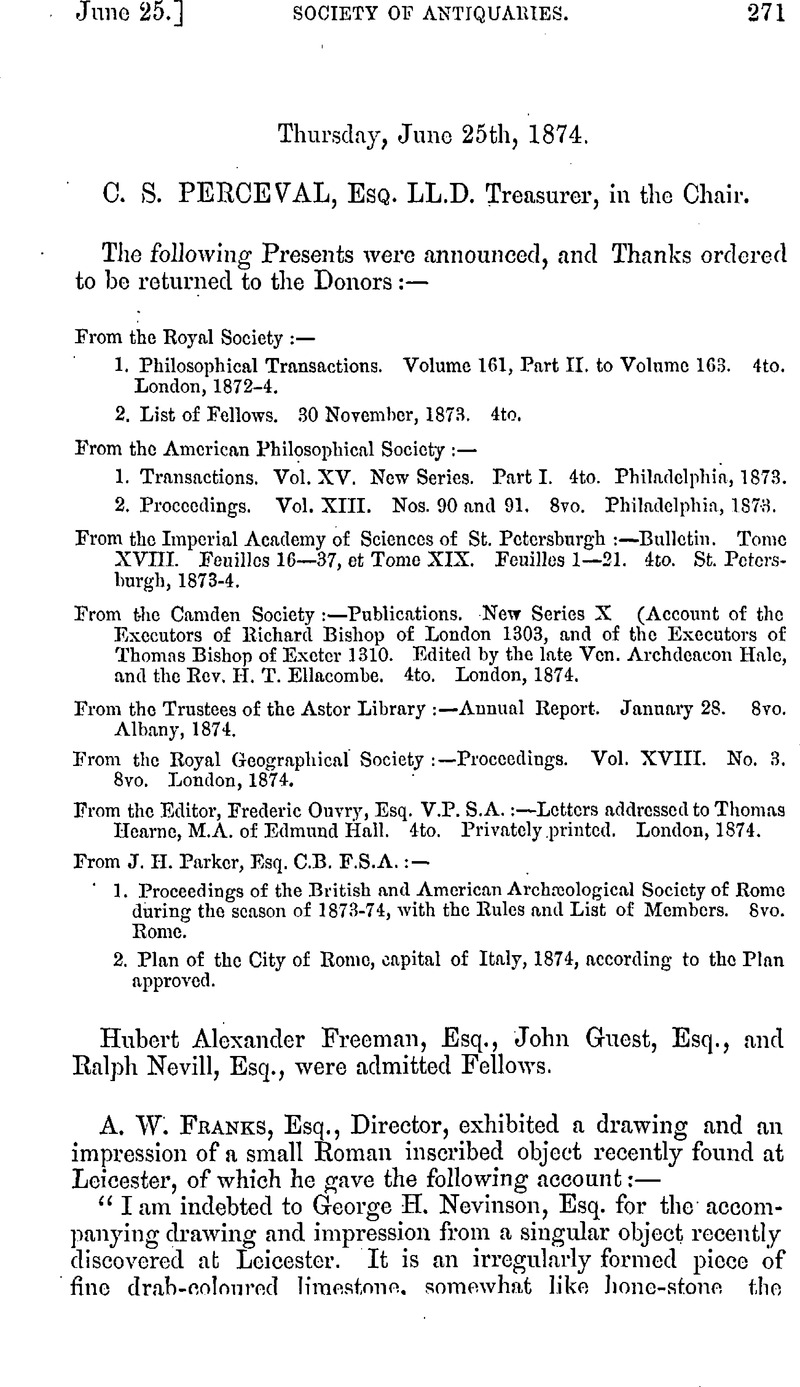No CrossRef data available.
Published online by Cambridge University Press: 10 May 2010

page 279 note * The English version is given by Ritson, Anct. Eng. Metr. Romances, iii. 193, “The Knight of Curtesy and his fair Lady of Faguell.”
page 279 note † This tournament is said by Crapelet to be historical and to have been given by Raoul I. Sire de Coucy, about 1187. The romance is said to be as old as 1228, see Crapelet's preface, p. xiv., but the copy in the Royal Library, whence he printed, is of the fourteenth century, and not very exact.
page 280 note * Cloche and clocette, vid. s.v. French Glossary at the end of Ducange.
page 280 note † Sambues, litière, partie du harnais, Gloss. ubi supra; saddle cloth, Halliwell, s.v. sambus.
page 280 note ‡ The construction is obscure; the text perhaps corrupt. A comparison of this with the following passages, I think, sufficiently shows that the arms of Haunier de Chevrain are referred to.
page 280 note § The French editor has put a comma after Haunier, which makes the line still harder to be understood.
page 280 note ‖ I read desdain—the interchange of t and d may sometimes be attributed to defect of ear in a scribe writing from dictation.
page 280 note ¶ Said to be identical with a Hugh do Rumigny mentioned afterwards, and whose arms aro blazoned (l. 1532),
d'or an vermeil santoir
De vert y avoir un treschoir,
Et pour faire l'escu plus gent
I ot cinq quoquilles d'argent.
page 281 note * Possibly devisier should be read devise. I take it, however, as the infinitive, deviser—to talk, to tell a tale.
page 281 note † Read “Et d'argent et de geulles”—or “D'argent et de geulles.”
page 283 note * A shield precisely similar will be found on the counter-seal of Alice Countess of Eu, c. 1200, figured, also from an example at Canterbury, in Arch. Journ. xi. 369.
page 284 note * See Freeman's Hist. of Norman Conq. ii. 183, for an interesting account of the House of Belesme.
page 285 note * Rot. Scacc. Norm. i. lxxij.
page 285 note † See Mr. J. G. Nichols on the Descent of the Earldom of Salisbury. Proc. Arch. Instit. Salisbury, p. 216.
page 285 note ‡ Rog. Hoveden, ed. Stubbs, ii. 85; and Rymer, vol. i.
page 286 note * Rog. Hov. ii. 285.
page 286 note † Ibid. iii. 3.
page 286 note ‡ Ibid. iii. 19, and footnote.
page 286 note § Collection de Sceaux des Archives de l'Empire, No. 999.
page 286 note ‖ De la Roque (Maison d' Harcourt, i. 295,) gives, without citing authority, Argent, three chevrons, as the arms of Belesme; and Père Anselme engraves a shield with two chevrons as belonging to the Earls of Perche.